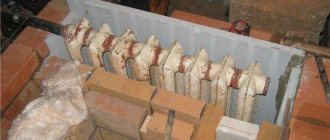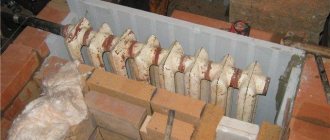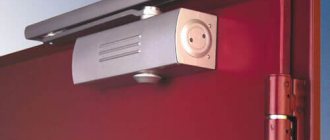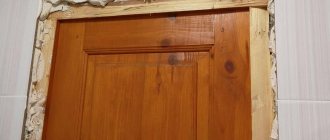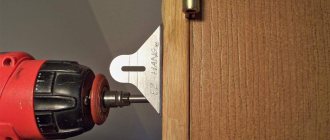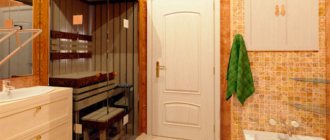A door closer is often installed on the door leaf, which simplifies the opening process. This mechanism takes on a significant part of the effort applied by a person; with this principle of operation, there is no need to control the operation of the door leaf. It opens easily and smoothly returns to its original position. However, installing a closer is not a prerequisite for closing the door. It is preferable to install it in places with high traffic, which helps reduce wear on the door mechanism.
Operating principle
If you are interested in how closers work, you should know that the design is based on a spring, but auxiliary elements are also provided. It accumulates mechanical energy by contracting. When a person releases the sash, the spring straightens. In addition, front door closers operate smoothly. This possibility is provided thanks to the hydraulic system.
To ensure that the spring straightens smoothly, an oil shock absorber is used. The design includes a system of special valves, thanks to which oil flows from chamber to chamber. In this way, the speed of operation of the installed closer is regulated, and at the same time the speed of movement of the web. Due to a sufficient level of viscosity, the mechanism also ensures silent operation.
Internal structure
Device nodes:
- traction - connects the door and the door closer, with the help of this element the force that a person applies to the door when trying to open it is transmitted;
- rotary axis;
- a cylindrical piston connected to a spring - the unit is driven by a gear, which, in turn, depends on the position of the rotary axis;
- oil valves containing a viscous liquid, which ensures smooth movement of the structure;
- adjusting screw - allows you to set the spring compression power;
- a screw responsible for limiting the opening of the sash.
The operating principle of a door closer is based on the interaction of two main components: a piston with a spring and a valve system. The remaining elements are auxiliary in the circuit and help ensure correct adjustment of the mechanism. Screws are used to control the operation of the closer. Without these elements, the sash will close too slowly or, conversely, quickly, and will also create a noise effect. The design of the door closer, in particular the lever arm and the housing, can be different; on the basis of this, the design is divided into groups.
Principle of operation
The classic closer mechanism uses a lever rod for its operation. But the main secret is in the device in which the spring block and piston are located. There is also a cylindrical capsule and inside it there are many thin hydraulic channels.
When the door opens, the linkage transfers force to the piston. He, moving along the cylinder, compresses the spring. As soon as the door is left alone, the spiral immediately begins to unclench, returning the door to its original position. The spring return speed can be adjusted.
For this purpose, there are adjusting screws on the closer body. They change the cross-sectional size of hydraulic channels. The smaller the passage for oil, the more it slows down the reverse movement of the door. That is, it resists the spring returning to its original position.
Models using the latest technology have a special valve. It automatically engages when the door reaches a position of 70 degrees and begins to actively slow down the movement. As soon as the flap reaches the 15 degree mark, the valve reduces resistance and a powerful, but fairly soft closing occurs. This final force is necessary to overcome the resistance of the air flow and the seal, as well as to push through the latch mechanism. A more modern design consists of a hydraulic circuit driven by a rack and pinion transmission. This device has a smoother sash stroke, which can be adjusted over a wide range. The final force is even more powerful, allowing you to press the door more tightly at the last stage.
There is also cam technology. It has the highest efficiency compared to other systems. And this allows for an even tighter, but softer closure.
Types and types of door closers
There are 3 main types of such structures:
- top;
- lower, or floor;
- hidden, or mortise.
In the first case, the mechanism is installed in the upper part of the sash. The second option involves the need to install the product at the bottom of the door leaf, the drive mechanism is mounted on the floor. The hidden, or internal, mechanism remains invisible when looking at the sash. According to their intended purpose, devices are divided into:
- to internal;
- to the street.
The first option is designed for indoor installation, which allows you to extend its service life. Outdoor analogues have a reinforced design, they are better protected from external factors. In addition, there is a closer for sliding doors and mechanisms for swing doors. The first option is equipped with a linear traction, and the canvas will move along the wall. The device for swing doors assumes in the design the presence of a rod capable of changing position. If the canvas is opened, the draft will move in the direction from the load-bearing walls.
Spring
Separately, we should consider the closer mechanism for pendulum structures. In this case, it is not possible to use the classic design for swing doors, since the leaf can move in the opposite direction: forward, backward, repeating the movement of the pendulum. This means you need to use an alternative solution. For this reason, in order to control the movements of the door, a hidden or floor-mounted design is provided.
Hinges with closer
This is a compact design that also works on the basis of hydraulic oil and a cylindrical piston. To regulate the speed of movement of the web, screws are provided, which are located in the inner part of this element of the fittings. Adjustment is carried out using a hex key. This control method is suitable for lightweight options. The weight of the sash should be in the range from 50 to 90 kg, which will allow the installation of 2 such elements. There is a door closer for a metal door and a wooden leaf.
Street
It is often necessary to improve the principle of operation of a canvas located not inside the object, but outside, while the outer element must have a more powerful design. Considering that entrance doors weigh much more than interior doors and are large in size, when choosing, you need to focus on the parameters of the door. If this is not done, the device will not perform its function. Additionally, the operating conditions must be taken into account. So, for example, a door closer must withstand temperatures within the range of -40...+65°C.
Floor-standing
Such designs are similar in principle to the classic design. However, floor-type devices are somewhat different in design: the lever is attached to a spring and a piston, connected to a roller that performs translational movements, and drives the heart-shaped axis. It is advisable to use a mechanism of this type to control the mobility of pendulum doors and leaves, and swing-type door leaves.
Install the closer on a wooden door, products with glass inserts. Despite its small size, it is a universal option that can withstand significant loads. Moreover, floor-standing devices often perform the function of a rotating mechanism. Scope of application: public facilities, shopping centers in which double doors with glass inserts without a frame are installed. It is preferable to mount such mechanisms on the entrance doors.
Hidden door
Devices of this type are presented in two varieties:
- hinge closers;
- with sliding rod.
The first option has already been considered. These are elements that are used as a turning mechanism and are responsible for opening/closing the sash. If we are considering door closers with a sliding rod, then in this case we install the device body on the leaf. A sliding rod will be connected to it on one side, and the other will be attached to a groove that is cut with a milling cutter in the door frame.
When you plan to install hidden door mechanisms with a sliding rod, it is important to make sure that there is a gap between the leaf and the frame of sufficient thickness for the draft to pass through it. There are several nuances of such door closer designs:
- small operational resource;
- the need for accurate calculation of the installation location;
- ability to withstand small closing and opening forces;
- Installation options for hidden door closers are limited;
- narrow scope.
Classification by closing force
Closers are divided into several types, differing in force class, which correlates with the inertia of the door leaf. This parameter is influenced by the following characteristics: the mass of the leaf and the length of the arm, which corresponds to the width of the door. The force class is determined by the EN 1154 standard. Taking these parameters into account, the price category of the mechanisms is formed. Classification based on the width of the web and its weight, respectively:
- EN1: 750 mm, 20 kg;
- EN2: 850 mm, 40 kg;
- EN3: 950 mm, 60 kg;
- EN4: 1100 mm, 80 kg;
- EN5: 1250 mm, 100 kg;
- EN6: 1400 mm, 120 kg;
- EN7: 1600 mm, 160 kg.
The first options are designed for installation on lightweight sashes. For this reason, they are often attached to interior walls. Products of the latest classes are designed for heavy doors.
Features of the closer
The main advantage of the closer is its versatility. Modern mechanisms can be used in all weather conditions and different temperature ranges. This device is necessary if the gate opens very often, closes spontaneously too abruptly, or can accidentally swing open due to the wind.
To choose the right door closer, you should focus on several basic criteria. The main points are safety and convenience. Additionally, you need to take into account the parameters of the gate on which you plan to install it.
How to choose the right one
If you need to purchase a door closer, first of all, it is recommended to determine the force class. To do this, you need to know the width of the sash, as well as its mass. Based on these parameters, a product is selected to adjust the forces. Other characteristics:
- door design - for swing and sliding doors it is advisable to purchase various options for door closers;
- features of the mechanism: what parts it consists of (body, rod, etc.), how it works;
- method of installing door closers: located in the upper, lower part or hidden in the door frame, hinges;
- subtleties of the door design - in particular, they take into account the possibility of installing a hidden closer, for which you need to choose a leaf with sufficient clearance between it and the frame;
- adjusting the screws that determine the opening capabilities of the sash and the intensity of the spring pressure;
- operating conditions, for example, for entrance doors the recommended temperature range is -40...+65°C;
- additional functions - in particular, we are talking about the possibility of fixing the sash in the open position at a given angle and adjusting the mechanism to delay closing;
- product design with adjustable draft - now you can choose a door closer that suits your interior;
- number of opening/closing cycles or working life of the mechanism;
- protection against vandalism - helps prevent damage.
Criterias of choice
Nowadays there are many models on the door closer market; each manufacturer produces entire lines of devices with different characteristics. There is a certain set of criteria that make it easier to choose and buy the most suitable and reliable device.
- Purpose. An important parameter that determines the technical characteristics of the closer - for interior doors, entrance doors, external doors, and fire doors. Some brands produce both profile and universal models that can be used both indoors and outdoors. For the latter, the operating temperature range has been increased, on average - from -30 to +50°C.
- Quality of materials, assembly, fastenings. A closer is a device that takes on a large load, so defects in raw materials and connections are unacceptable. You shouldn’t chase cheap devices from dubious no-names; it’s better to take a closer look at state-priced devices from well-known companies.
- Closing force. A category that is defined by the European standard EN1154 and is marked with an alphanumeric code from EN 2 to EN 7. The higher the number, the more powerful the closer is. For interior doors, EN 2-3 is suitable, for entrance doors - EN4-5.
- Wind brake (Back Check). Responsible for forced braking of movement during strong gusts of wind and drafts.
- Availability of anti-vandal valve. Provides relief of excess pressure when attempting to suddenly open or close the door. Allows you to extend the service life of the closer.
- Fixation in open position. An optional feature that is not available on all models, but is highly desirable, as it eliminates the need to hold the door manually or using improvised means.
The list presented is incomplete, but reflects the main points. Another criterion is the price of the door closer, but practice shows that many budget models, although inferior to luxury models in some capabilities, cope with the main functions perfectly well.
DIY adjustment
If you are selecting a door closer, take into account the possibility of changing the position of the screws located on the body:
- adjustable opening angle: from 90 to 180°;
- the speed of closing the sash changes;
- Smooth running is ensured when the specified angle is reached.
The screws are turned clockwise or in the opposite direction. If you need to adjust a mechanical door closer, find the fasteners on the body and turn the screw 1/4 turn to determine how the operation of the leaf changes. Based on the changes, adjustments are made in the right direction.
Types of structures
The door hardware market offers a wide range of door closers. But the variety concerns more the appearance of the product. In fact, the classification is based on a number of characteristics that determine how the torque is transmitted. There are only a couple of such criteria and therefore only two types of models can be distinguished.
With linkage
In the device, the rotational moment is transmitted by a folding handle. This mechanism has become most widespread mainly due to its low cost. But the articulated rod in it is reliable and can last almost forever. People call the device a knee device because the folding lever is similar to it. Because of this, the design sometimes looks bulky and spoils the appearance of the entire door system.
Similar models often suffer from vandals because they cannot be reliably protected. Therefore, installing them in public places is problematic and they try to use a different design more often.
With sliding channel
In such devices, the force is transmitted by the so-called sliding rod. That is, the lever moves along the channel. The device does not have any strongly protruding parts that could be broken by hooligans. Therefore, large organizations are more willing to install such structures in their offices.
In addition to its good anti-vandal properties, the door closer is valued because it can be easily adjusted to the maximum door opening. For this purpose, an elastic limiter is installed in it.
Installation methods
Depending on the type of construction, the door closer mount is attached in different ways:
- on the surface of the door frame;
- in the floor;
- in the groove of the box;
- closers for sliding doors are hidden in hinges or are linear-type devices that are attached to the door frame (they work on a different principle than their counterparts for swing doors).
When determining the installation method, you need to take into account the characteristics of the door frame and the thickness of the gap between the frame and the leaf. For example, a closer on a plastic door is mounted on the surface of the door frame and connected to the door leaf with a rod.
Possible installation options on the door leaf
The closer body is positioned in several ways:
- on the canvas, then the rod will be fixed to the door frame or in a groove, which is also cut out in the frame;
- on the door frame, accordingly, the free end of the rod is located on the leaf.
If you plan to secure the end of the rod in the groove of the door frame, in this case there is only one option for locating the closer body - on the door leaf. The mechanism is always installed on a balcony door in the standard way: the closer body is on the sash, the rod is fixed to the surface of the door frame.
DIY installation features
In accordance with the selected opening force of the blade, the distance between the hinges and the mechanism body is determined. A door closer for a lightweight door must be of class EN1-EN4. For installation, a template on a 1:1 scale is used. It needs to be glued to the door leaf with tape. After this, they proceed to drilling holes for fasteners. The lever that performs the traction function should be divided into 2 elements. After this, one part is installed on the door frame, and the second on the door leaf. Then the elements of the lever are connected and it is adjusted in length.
Door closer without crossbar
If there is no crossbar above the gate, use more powerful closers, attach the actuating part directly to the support post, and perform the work in the following sequence:
- make markings on the gate canvas and the support post, where the diagram (pattern) allows you to complete this stage quickly and accurately;
- attach the actuator to the gate using the fastening material supplied with the product or household welding;
- the counter plate is attached to the support column in the chosen way, but if it is made of brick or has a reinforced concrete structure, the metal plate is first secured using anchors;
- install the thrust, then adjust the offset to a distance convenient for operating the door;
- special screws regulate the closing speed of the gate, where counterclockwise rotation increases the closing speed.
Installation drawing
Having decided how to install the door closer on a gate without a top crossbar, it is necessary to take into account that the installation is completed by installing the protective covers in the standard places and checking the operation of the adjusted mechanism.
Installation of a door closer without a top crossbar is shown in the video below.
How to install decorative fence posts, read the link.
Repair
If the mechanism is overloaded, which leads to wear, some parts are replaced. Spare parts for the closer are selected taking into account its type. If there is an oil leak, the condition of the housing is assessed; if the defect is small, the gap is closed with sealant. If there is severe deformation, the part is replaced. When the metal of the rod breaks, a welding machine is used. Corrosion is eliminated by cleaning. The bend of the rod is corrected manually, and the shape of this element is restored. The door closer on a glass door, metal or wooden door is repaired in the same way.
Manufacturers and reviews
The ranking of door closer manufacturers is as follows: the German companies Dorma and Boda deservedly occupy the first and second places. Enterprises specialize in the production of models with sliding traction, which are very popular and are much better bought than knee models. Following the German companies are the Italian Cisa and Cobra, offering consumers traditional lever and hidden floor devices. Next comes the Korean KDC, which uses German components and produces anti-corrosion models for outdoor installation, and the Finnish Abloy closes the top six.
Products from this company are equipped with independent valves that ensure smooth operation and ensure tight closure. In addition, models from Finland are equipped with a very precise control system, which responds very responsively to the slightest change in settings. Buyers consider the only drawback of foreign models to be quite high cost. Thus, the price of especially powerful models designed to control heavy steel doors can reach 38 thousand rubles.
Russian-made models are also popular and in demand on the domestic market. Devices from well-known and Nikiret are in no way inferior to imported analogues in terms of their performance characteristics, have many positive reviews and are sold well not only in Russia, but also in neighboring countries. Consumers note the high adaptability of the devices to Siberian frosts and the ability to use the devices in almost all regions of the country. In addition, Russian door closers are much cheaper than their European counterparts, which makes them even more popular and in demand.
Closers for heavy metal doors
Closers for solid steel doors must have greater power to provide sufficient force to press the closing leaf. In addition, it is necessary to keep the door from impact, which, in addition to noise, causes additional vibration and premature wear of the door mechanisms.
To ensure operability, heavy doors are equipped with closers designed for loads of up to 600 kg. By design, these can be open-mounted devices and floor-standing models. The mechanism allows you to separately regulate the force and speed when closing and slamming the door. The opening angle is limited to 180°, and the closer operates at 160°. The products provide a partial opening function and the ability to fix the position. An anti-vandal valve is installed to prevent damage in case of manual closing.
With wide folds and a large area of the canvas, additional windage is created, so the closers are equipped with a “wind brake” that protects against impacts and involuntary movement.
Find out what options there are by type of installation
- Top or overhead . A common option. The housing is mounted on the inside of the door from above, and the lever or rod is attached to the horizontal strip of the jamb.
- Floor-standing . Installed in a recess on the floor. Almost invisible. Designed mainly for thin glass doors.
- Framed or hidden . They are placed inside the door structure, where they are inserted during the production process.
There is also a classification according to the method of work :
- Mechanical.
- Electrical.
You should choose spare parts from the same manufacturers that manufactured the main mechanism. Common accessory elements include linkage rods, mounting plates, retainers open ( FOP ) and sliding channels.



